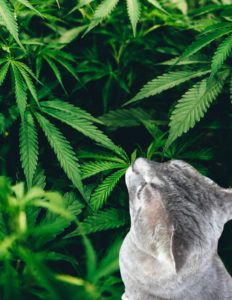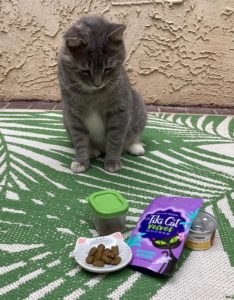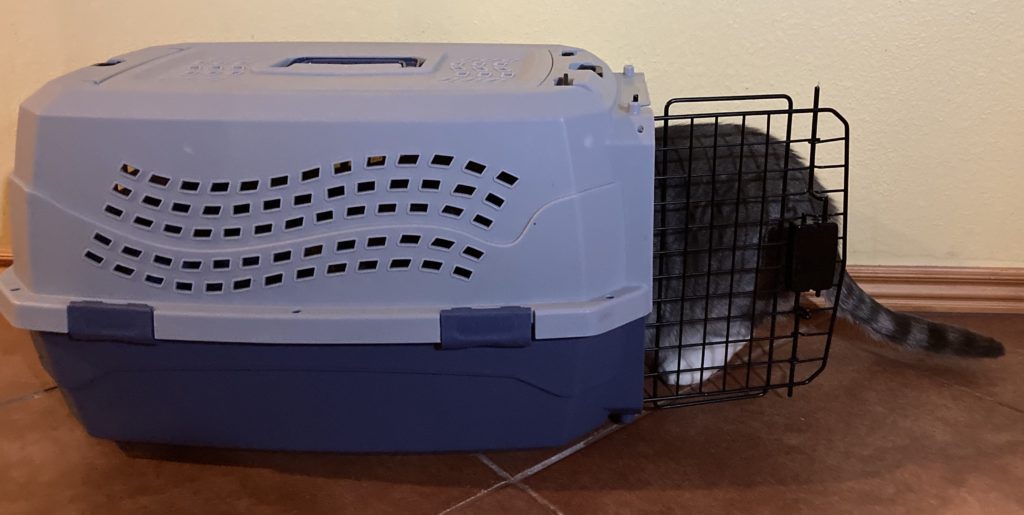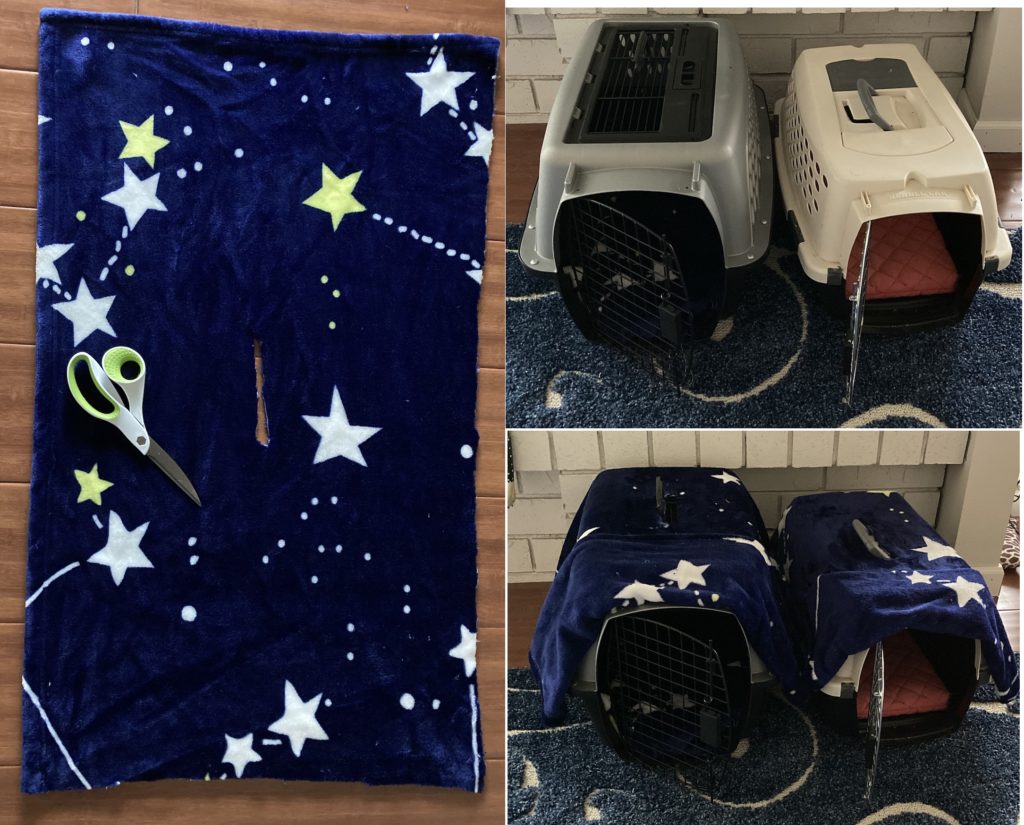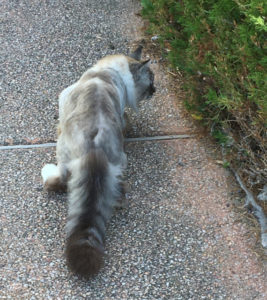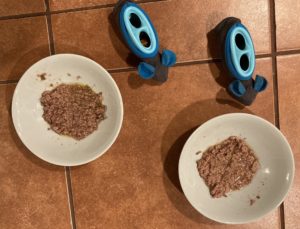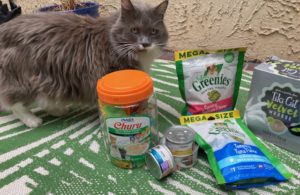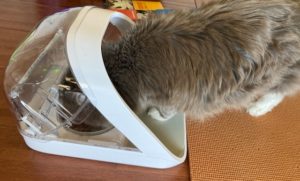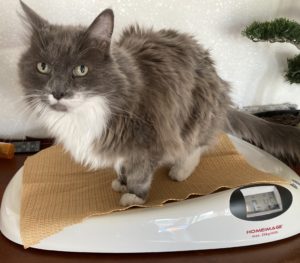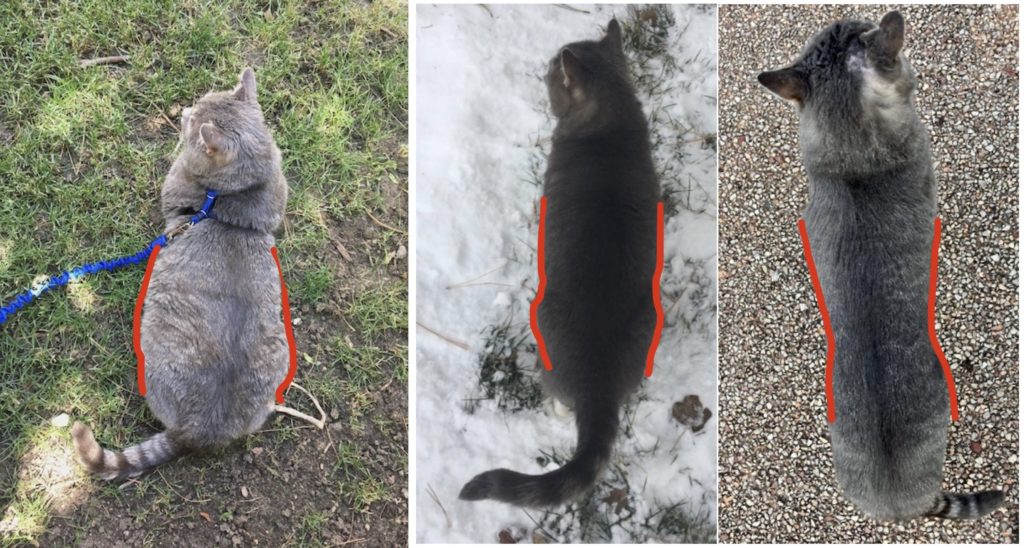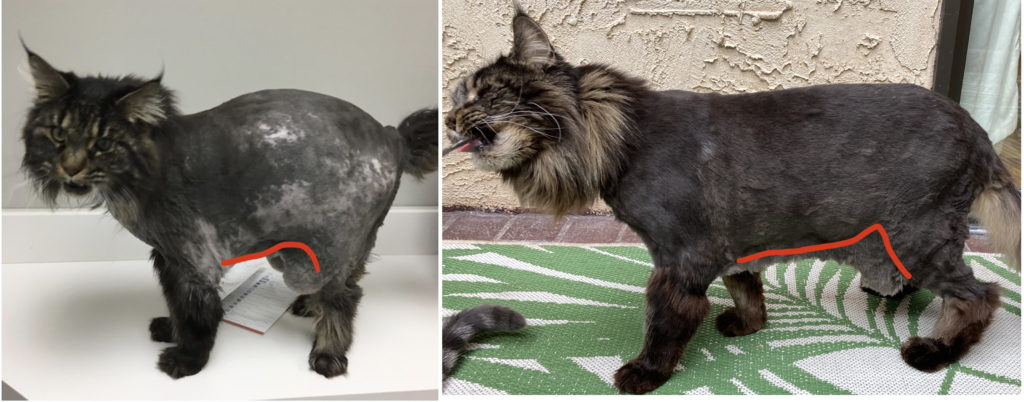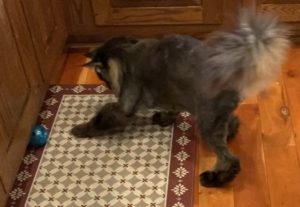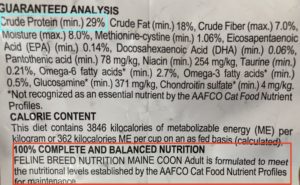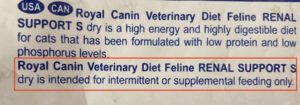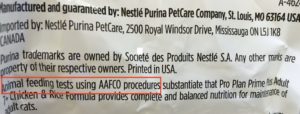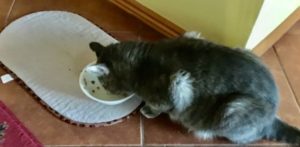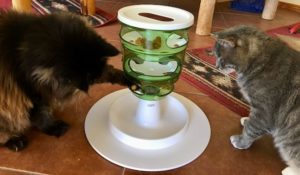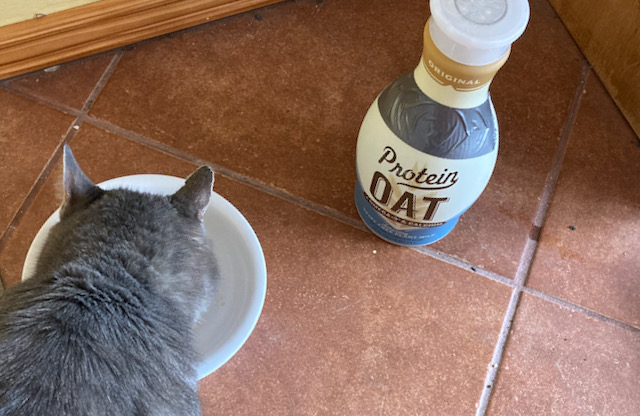
I have been trying some plant-based milks. My most recent purchase was oat milk, fortified with other plant proteins, so that the protein content is similar to that of cow’s milk. While I was having cereal, I was mobbed by three of my cats who demanded a taste. All three liked the oat milk, and now recognize the jug, asking for more.
I am aware that oats can be in pet foods, so a taste of oat milk occasionally should not be a problem. Cats often like cow’s milk but are lactose intolerant. Oat milk does not have lactose.
Was the plant milk appealing because of the added protein? This brand claimed to have the 9 essential amino acids that human adults need and as much protein as cow’s milk.
What amino acids do cats need? Could plant based cat food be healthy with the right supplements?
Cats are what we call “obligate carnivores” -they evolved to eat meat, unlike dogs and humans who are omnivores (eat a combination of plant and animal foods). Cats not only need protein from meat for repairing and building tissue and regulating their metabolism – they need protein to provide energy.
There are 20 amino acids that make up proteins. Human bodies can make 11 of these 20 amino acids – the rest we have to get in food.
Amino acids that we must get from food are called essential amino acids.
Cats can synthesize 9 of the 20 amino acids. Their diet must provide the remaining 11: 9 essential amino acids that we humans require plus 2 additional ones: taurine, arginine.
What happens if a cat does not get Taurine and Arginine?
Not Enough Taurine…
- blindness due to retinal degeneration
- heart failure
- reproductive issues
- abnormalities in the central nervous system
Not enough Arginine…
- high amounts of ammonia in the bloodstream
- seizures and death
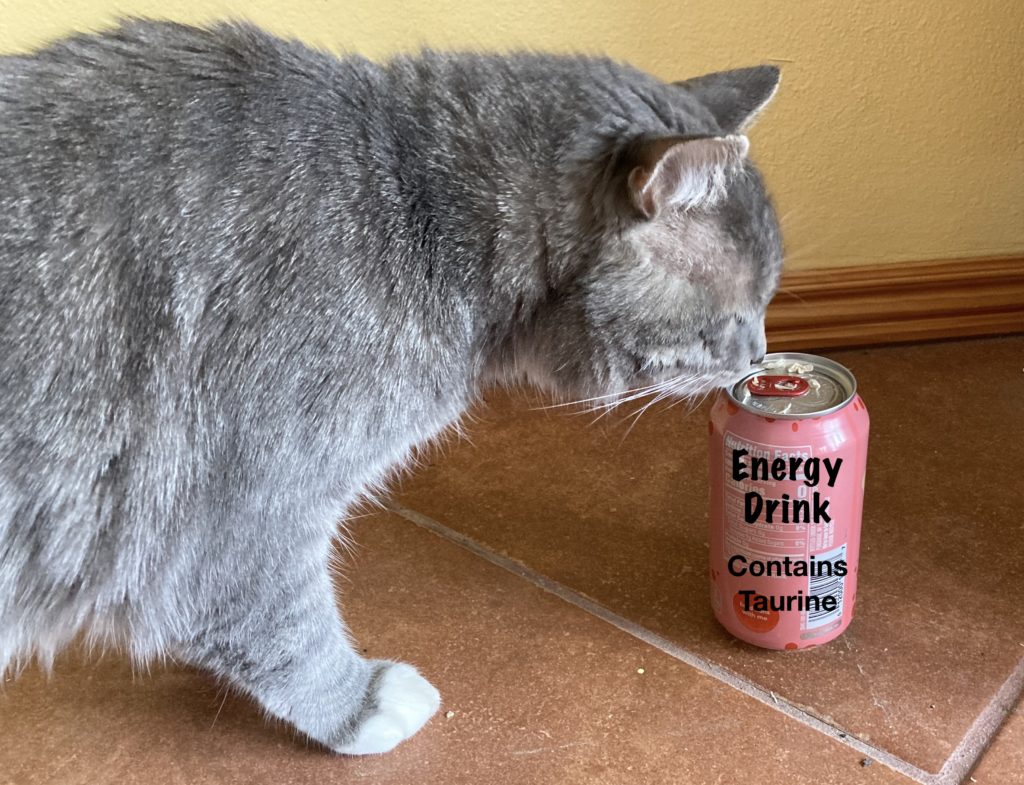
Sources of taurine and arginine in nature: animal tissues such as meat, fish and eggs!
What else do cats need to get in their food? Niacin, vitamin A, and vitamin D – their bodies do not make these vitamins.
What if we supplement plant based cat food with taurine, arginine, vitamins…
Proteins can be found in plants as well as animal tissues (meat). However, whereas animal tissues are “complete” and provide all the essential amino acids, plant sources are not “complete”. Taurine is not found in plants.
Now we arrive at the question of digestibility – sufficient amounts of the amino acids and vitamins must be digested from your cat’s food to be available to her body.
Plant based proteins are not as digestible as animal proteins. Plant protein has a different structure than animal protein and there are chemical compounds in plants that affect how well your cat’s digestive enzymes break down her food.
Recent research indicates that it is the “non-protein” part of whole grains that affects the digestibility of plant proteins. One finding in this 9 year study was that cats were able to digest appropriately processed plant proteins such as corn gluten as well as they digest chicken and fish proteins.
The Future of Cat Food
There is an ethical and economical drive to reduce the carbon footprint of companion animals and one way is to reduce their consumption of meats sourced from livestock bred for this purpose. Increasing the amount of plant protein in commercial cat food is the subject of current research.
There are some plant based cat foods already on the market. However, I was not able to find ones that advertised having done AAFCO feeding trials. There are concerns about nutritional adequacy with these foods. Personally, I am not ready to risk my “fur babies” on these foods yet.
I feel we will see more plant-based foods for our cats in the future. In the meantime, make sure your cat’s food has taurine, arginine, niacin, Vitamin A and Vitamin D in addition to plenty of “complete” protein.

